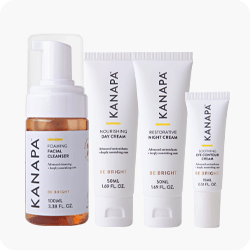Are you a dog owner concerned about the skin of your pet?
Dogs have long been known as our best friends and why wouldn’t you want the best for your most loyal, furry friend of the four legged variety.
Imagine that you find yourself with a skin allergy or condition. You would try anything to get that right so that you didn’t look or feel second best.
In the same way you’d want to make it more pleasant for your dog if it has skin allergies or conditions. But there are important things to be aware of about dog skin allergies so you end up helping and not hindering your best friend’s progress.
How is dog skin different from humans?
In the same way as human skin, dog’s skin has different layers – the outer layer is the epidermis.
The main function of a dog’s epidermis is as a barrier against disease and damage from nasty bacteria, parasites and viruses which may be found in its environment. A dog’s epidermis is a lot more delicate at 3 - 5 cells thick compared to 10 – 15 cells thick in humans. (1)
Human skin has a slightly acidic pH level of between 5.2 to 6.2 while the pH levels for dogs tend to be more neutral, between 5.5 to 7.5 depending on the size and breed. The pH levels of a dog’s epidermis is important because if they are imbalanced this can result in skin problems and allergies. (2)
Dogs have certain bacteria on the skin which help to protect it – a common bacteria is Staphylococcus. When an allergy occurs it can break down the skin barrier and the usually safe microbes can spread and cause bacterial infection. If you keep your dog’s skin healthy it can maintain a balanced level of healthy bacteria and fight off nasty visitors. (3)
Dog skin allergies
Your dog can experience debilitating skin allergies and this is among the most common reasons why people take them to the vet. An allergy is the dog’s immune system reacting to certain allergens or substances in its environment.
Common dog allergy symptoms
- Inflammation, reddened skin, rash
- Itchiness causing the dog to itch and scratch and sometimes bite and lick the affected area
- Scales and crusts, small outbreaks of swollen skin (Seen in bacterial dermatitis) (4)
Common causes of skin conditions
It’s important to know that there are more than 160 different skin disorders in dogs so it can be really challenging to define what type of skin condition your dog has and what is causing it. (5)
Some causes of dog skin allergies
- Insects, fleas
- Pollens
- Dust mites
- Mould
- Dog food, unhealthy diet
Reccuring bacterial dermatitis which can often be caused by an unhealthy diet as it is not seen a lot in healthy dogs. Seborrhea (oily and flaky skin) is common due to low fatty acid and protein in the diet, and dermatitis is often due to fleas and mites.
‘Control is the goal’ for many skin allergies so go about controlling a dog’s skin condition through special diets, omega 3 fatty acids, vitamin supplements and special shampoos. (5)
Common skin conditions
Dog dermatitis (Atopic dermatitis)
Atopic dermatitis is an inflammatory chronic disease caused by an allergic reaction to allergens in the environment such as dust mites, moulds and pollens. These allergens are often the same types which cause allergic conditions in humans such as hayfever. Atopic dermatitis is a common cause of chronic itching and scratching in dogs. (6) (7)
One of the best ways to help treat your dog’s atopic dermatitis is limiting its exposure to the allergens however this isn’t always easy and other treatments are needed. Special shampoos and creams are often used to remove the allergens that cling to the skin’s surface. These products as well as omega 3 fish oil can help reduce the inflammation and itching. (5)
Dog eczema (also known as ‘hot spots’) causes a dogs skin to become inflamed. It is often caused by a reaction to certain allergies. There are dry and wet types of eczema which cause different symptoms. In wet eczema there will be a red, scaly area which produces a wet discharge. Affected areas of dry eczema will appear dry and flaky.
You may find your four legged friend scratching and licking the inflamed area which only makes things worse as bacteria is spread around causing inflammation and infection. Your dog may also bite the area and if the skin breaks it is more prone to other infection. (8)
Knowing your dog’s daily routine and environment can help your vet in diagnosing what has led to the allergic reaction which may be causing the skin conditions.
How an unhealthy diet aggravates skin conditions
If you're dog's diet is not healthy they can encounter various problems including allergies and problems with their skin and coat. Around ten percent of all dog allergies are food allergies, with the most common being from meat (beef, chicken, lamb and pork), fish, dairy, wheat, soy and artificial additives. (9)
Dog food allergy symptoms include skin problems such as rashes, chronic itching and hot spots which are often caused by poor nutrition. Sometimes this can be because the dog is exposed to a certain food source for a long time (such as the same source of protein or carbohydrate) and a change of the source might be all that is needed to stop the allergic reaction. (10) Feeding a homemade diet can be helpful for chronic skin allergies as ingredients can be monitored and restricted especially if they are known to be problematic. (11)
How fish oil helps with skin conditions
The National Research Council has set a safe upper limit of combined EPA and DHA for dogs at 20 – 55mg per pound of body weight.
Omega 3 fatty acids EPA and DHA in fish oil supplements are recommended by many veterinarians for decreasing harmful effects of inflammation in allergy-related skin conditions such as itching due to atopic dermatitis. DHA also results in production of less inflammatory substances. (12) (13)
Try giving your dog Xtend-Life’s superior Omega 3 for Dogs. They will be getting a good source of valuable Omega 3 DHA essential fatty acids. What sets our fish oil apart is its freshness and purity. Our fish oil is human-grade, quality tested and safe for your pet – just what your dog needs for fast, long-lasting results.
Do you have any great tips for keeping your best friend’s skin and coat in good shape? We welcome your stories about your prized pet. Everyone loves a good dog tale.
References:
- http://www.vetwest.com.au/pet-library/skin-the-difference-between-canine-and-human-skin
- http://regalpethealth.com/regal-blog/maintaining-the-ph-balance-in-dogs-skin/
- http://www.companionconsultancy.co.uk/press/10-things-you-didnt-know-about-your-dogs-skin/
- http://doghealthinsider.com/skin-allergies-in-dogs/
- http://www.petmd.com/dog/general-health/evr_dg_skin_problems
- http://www.skinvetclinic.com/atopicdermatitis.html
- http://www.petmd.com/dog/conditions/skin/c_dg_atopic_dermatitis
- http://doghealthinsider.com/canine-eczema/
- http://www.nutriment.co/common-diet-related-health-problems/
- http://www.dogchannel.com/dog-nutrition/article_poor.aspx
- http://www.peteducation.com/article.cfm?c=2+2111&aid=143
- http://www.peteducation.com/article.cfm?c=2+1659&aid=666
- http://www.petmd.com/blogs/thedailyvet/ktudor/2013/aug/the-dangers-of-too-much-fish-oil-30731


 Supplements
Supplements Superfoods
Superfoods Bundles
Bundles












